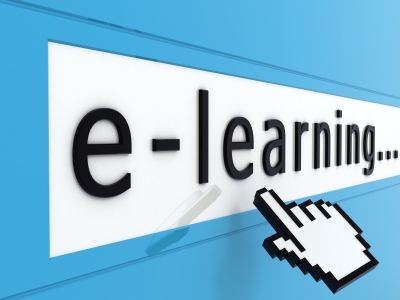
I wanted to share a response to a learning module I just completed for a course I am taking called "Technology in Administration". This module asked us to think about our experiences of a synchronous e-learning experience (think Skype or Google Hangouts) and asynchronous e-learning experience (think "all online learning"). I am fascinated with this topic because of the potential of online learning spaces and because I believe passionately in the learning experiences that can only be found in a traditional "brick-and-mortar" school. A question I come back to is, "How can we provide both traditional and online learning experiences for students?"
My own synchronous online session experiences have been successful learning experiences for me, overall. There is something to be said about being able to connect with your peers from the comfort of your home. The fact that I can eliminate an hour’s worth of travel from my day is a huge benefit to me and my family. I appreciate that I can get the same out of the content of the course as I could if I were in a classroom. However, the personal connections and social interactions do not seem as real to me as they do when we are able to meet face-to-face.
As I read through the module's materials, one resource in particular jumped out at me. It was the Rubric for Online Instruction from California State University, Chico. Take a look at the “Instructional Design and Delivery” section of the rubric:
What I noticed was that the characteristics of an exemplary online classroom have the same characteristics of an exemplary brick-and-mortar classroom. This was clear to me after reading the Exemplar characteristic for Interaction and Communication: "Course offers ample opportunities for interaction and communication student-to-student, student-to-instructor and student-to-content."
The traditional classroom and the online classroom are striving for the same thing when it comes to interactions. However, if I were to have to choose which of the two formats for learning have the edge in providing connections, I would definitely choose the traditional classroom. While there is convenience that comes with online learning formats, it's hard to replace face-to-face interactions with people in the flesh.
This leads me to believe that e-learning should be an instructional approach - not a way of learning - that is blended with traditional learning experiences. And apparently I am not alone in this belief. Our district recently organized a technology task-force of students, teachers and community members and one of the key findings was that students overwhelmingly said they do not want to sit in front of a screen all day.
We have classrooms in our building as young as 2nd grade utilizing online learning formats. We are using sites such as MobyMax and Khan Academy to supplement instruction (but not supplant it). Teachers have their classroom set up as workshops where students rotate to the online based activity throughout the workshop. I appreciate this approach because it seems like the classroom teachers are seeking out learning experiences for students in a response to student need rather than a top-down directive. It’s an approach that isn't utilizing technology for technology’s sake and is instead keeping the focus on the learner.
School leaders need to keep the learner at the center of any technology conversations. We need to ensure that we are teaching the learner, not the content or the device.